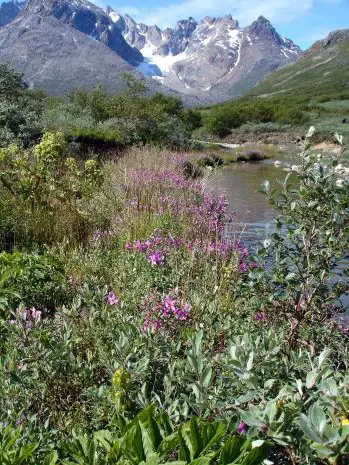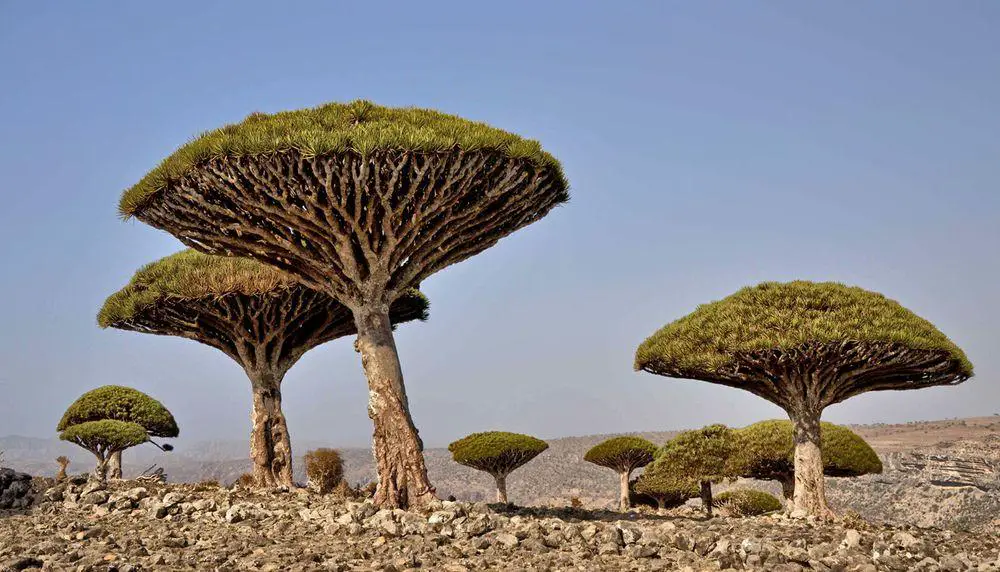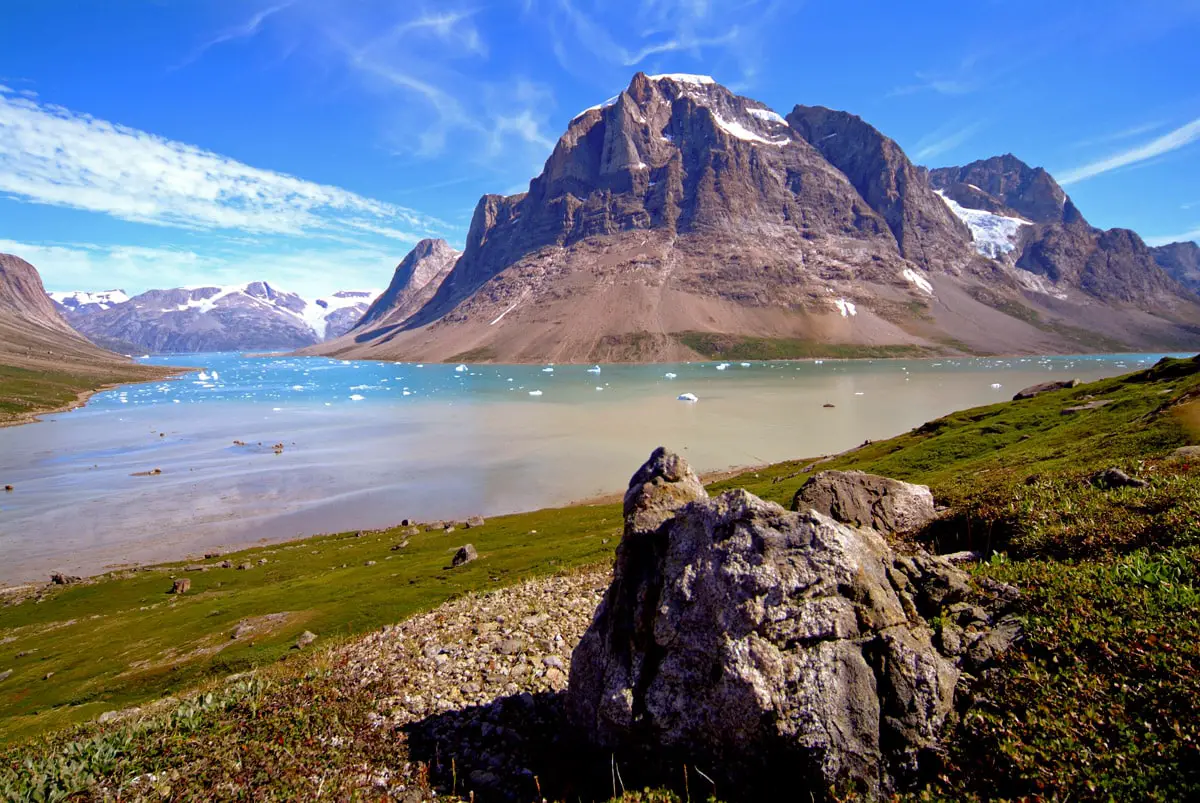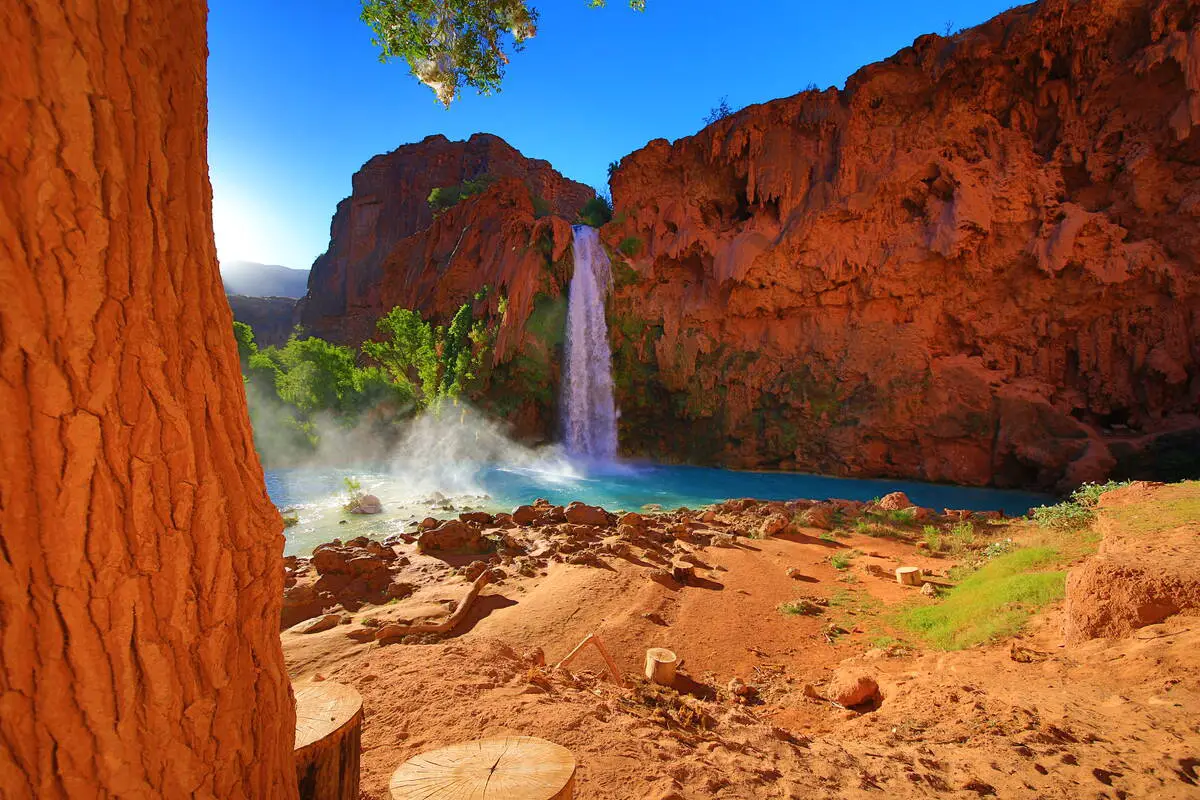Wonder
Qinngua Valley

 In short
In short
Although native trees grow in many locations of Southern Greenland, the only natural forest in this largest island of the world is located in Qinngua Valley.
 47.3%
47.3%
GPS coordinates
Location, address
Alternate names:
Area
Map of the site
If you see this after your page is loaded completely, leafletJS files are missing.
 In detail
In detail
Paradise Valley
Qinngua Valley (synonym – Paradise valley) is located in spectacular land – in the rugged mountains of Southern Greenland. Sometimes this land is compared to the Alps, but, it seems, no other place is similar to these spectacular mountains.
It is well possible to have an unforgettable, approximately 20 km long walk through Qinngua Valley to Kangikitsoq Fjord. The beautiful valley is flanked by rugged, snow-capped mountains, rising up to 1.6 km high above the floor of the valley. Just a handful of tourists come here every year.
Milder climate
Greenland is located in the arctic climatic zone, but some southern valleys further away from the sea have somewhat less harsh, subarctic climates.
Qinngua might have the mildest climate – this valley is located some 45 – 50 km from the sea and is not orientated towards the glaciers. Thus the cold wind from the enormous central glaciers here is felt much less than elsewhere. Summers here are warmer and the climate is more stable than at the sea. Thus the warm weather here lasts long enough for plants to grow in the summer and winds – less strong, allowing for trees to grow up.
The only true forest in Greenland
In some places in southern Greenland forests are planted – and even harvested.
Qinngua forest nevertheless is the only true forest in Greenland. It is possible that in earlier times, before the coming of Norse people, the forest was growing in some more places, which were converted to pasture and lost the natural forest. The few species of trees in Greenland are sensitive to sheep grazing.
Trees in Qinngua and along the banks of Tasersuaq Lake grow up to 6 – 8 m tall. Most trees are downy birches (Betula pubescens) and gray-leaf willows (Salix glauca).
Here grows also Greenlandic mountain ash (Sorbus groenlandica), mostly as a shrub, but also as trees reaching several meters high. In total in the valley grow more than 300 species of plants.
Walking through this thicket though is far from being fun – bushes are very dense and in the summer millions of midges are waiting for their victims.
Valley is a protected natural area since 1930.
The first settlement of Europeans in America?
There is a hypothesis that there was located Brattahlid – the farm of the first European settler in America – Eric the Red (1). Here, near the mouth of the stream in Tasersuaq Lake have been found remnants of an abandoned, very large Norse farm. This could be the largest known Norse farm in Greenland. It is possible that here was located also Leiðar church.
Farm was established sometime around 985 – 1020 AD. In some unknown time, possibly some centuries later, it was abandoned.
References
- Kevin J. Edwards, J. Edward Schofield and Jette Arneborg. Was Erik the Red’s Brattahlið Located at Qinngua? A Dissenting View. Viking and Medieval Scandinavia. Volume 6, Volume 6 / 2010, pp. 83-99.
 Linked articles
Linked articles

Ecosystems
Biotope is a rather small area with uniform environmental conditions and a specific community of life. Wondermondo describes biotopes and ecosystems which have striking looks, look very beautiful, or have other unusual characteristics.

Wonders of Greenland
Although Greenland is the largest island in the world, its wonders and landmarks are surprisingly little known. Most memorable is the breathtaking scenery of this northern land. Greenland offers harsh, rugged sights, but in the late spring the meadows are covered with millions of flowers – and in the south could be found even a small forest!

Wonders of North America
North America is a very diverse continent that extends from the northernmost land of the world to the moist tropical wilderness of Darien Gap. The most amazing wonders of North America are the prehistoric monuments of Mesoamerica, the geysers of Yellowstone, and colonial architecture.
 Recommended books
Recommended books
A Wilder Time
Greenland, one of the last truly wild places, contains a treasure trove of information on Earth’s early history embedded in its pristine landscape. Over numerous seasons, William E. Glassley and two fellow geologists traveled there to collect samples and observe rock formations for evidence to prove a contested theory that plate tectonics, the movement of Earth’s crust over its molten core, is a much more ancient process than some believed.
This Cold Heaven: Seven Seasons in Greenland
For the last decade, Gretel Ehrlich has been obsessed with an island, a terrain, a culture, and the treacherous beauty of a world that is defined by ice. In This Cold Heaven, she combines the story of her travels with history and cultural anthropology to reveal a Greenland that few of us could otherwise imagine.


